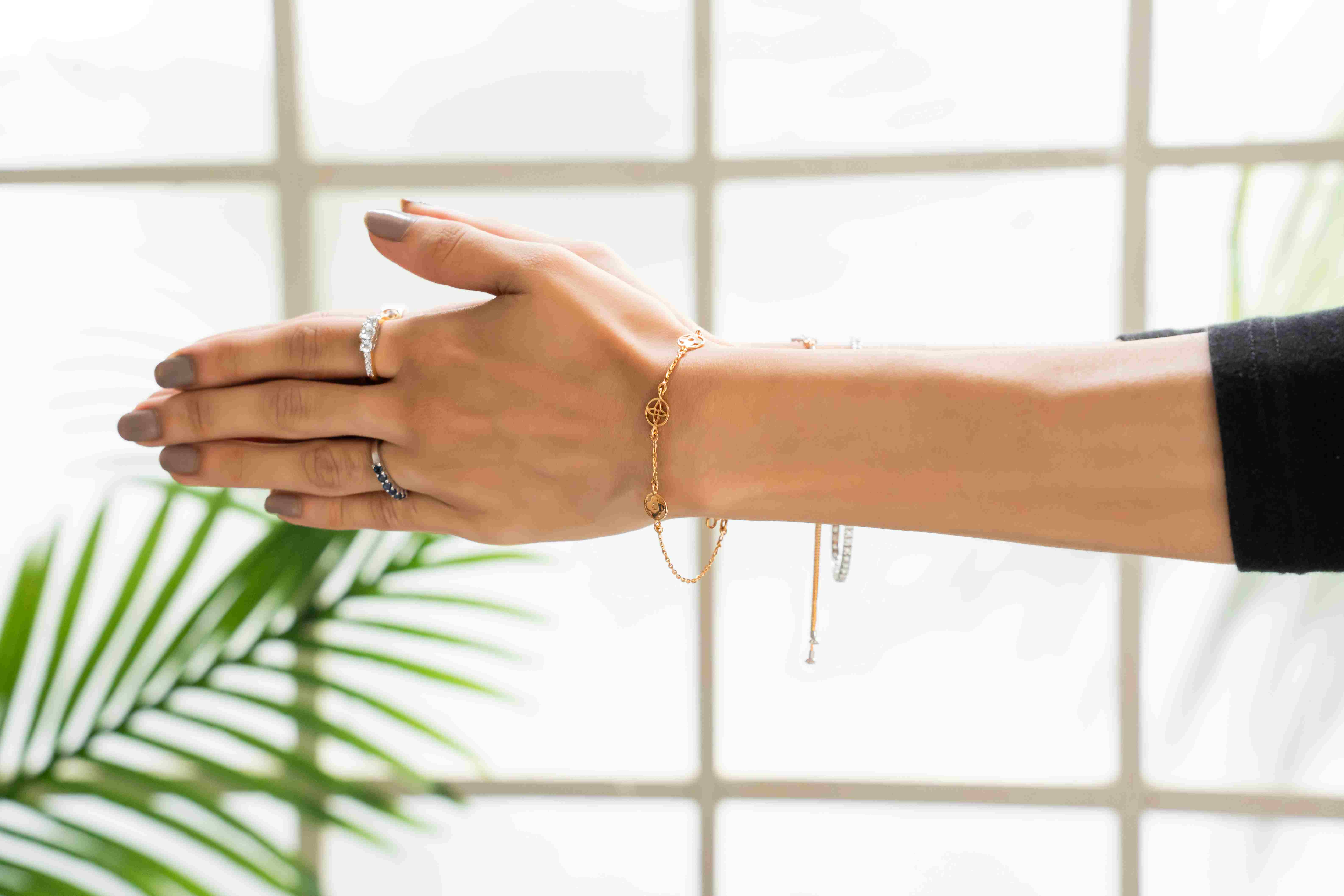How to Identify Real vs Fake Gold at Home
September 26, 2025

Gold is woven into the fabric of life in Pakistan — a symbol of celebration, security, and heritage. Whether you are inspecting a bridal necklace, a family bangle, or a cherished ring, knowing how to distinguish authentic gold from imitation preserves both sentiment and value. This guide outlines practical, at-home methods for initial verification, explains common limitations, and points you to professional avenues for conclusive testing.
Why authenticity matters
Beyond its beauty, gold often functions as a long-term store of value for Pakistani families. Ensuring that a necklace, bracelet, or bangle is genuine protects your legacy and prevents avoidable loss. If you are preparing for a wedding or adding to an heirloom collection, a moment of verification is a measured step toward peace of mind.
What to look for before testing
Familiarity with a few core characteristics helps make home tests more reliable:
Weight and density: Gold is notably dense. A genuine bracelet or chain feels heavier than it appears.
Colour: Pure gold retains a warm, consistent hue; significant discoloration may indicate plating.
Hallmarks: Look for karat marks — for example 24K, 22K, or 18K — stamped on rings, necklaces, or the clasp of a chain.
Finish: Fine craftsmanship and smooth finishing often indicate higher-purity pieces.
If you want to browse examples while reading, view the gold collections: Gold Necklaces, Gold Bracelets, and Gold Rings.
Simple at-home tests (quick, non-destructive)
These methods offer initial signals — not final certification.
1. The magnet test
Gold is not magnetic. Hold a strong magnet near the jewelry. If it is attracted, the piece likely contains magnetic base metals. This is a useful quick check for chains and bangles.
2. The water (density) test
Drop the piece into a glass of water. Real gold sinks quickly; many imitations float or descend slowly. Take care with pieces that include stones or hollow designs, which can affect buoyancy.
3. The ceramic streak test
Gently rub the jewelry on an unglazed ceramic tile. Gold leaves a faint golden streak; most base metals leave a black or grey mark. Use this sparingly — it can scratch soft finishes.
4. The vinegar test
Soak the piece in household white vinegar for a few minutes. Pure gold remains unchanged; base metals can discolor. This is particularly useful for small items like nose pins or pendants.
5. The skin test
Wear the piece for several hours. If the metal leaves green or black marks on the skin, it may be plated or alloyed with reactive metals. Rings and bangles in direct contact with skin are most revealing.
6. The hallmark and inspection test
Examine clasps, inner band surfaces, and discreet areas for stamped karat marks. Authentic hallmarks and fine finishing are strong indicators of genuine craftsmanship.
Methods to avoid at home (or use with extreme care)
Harsh chemicals: Strong acids can damage precious stones and delicate finishes.
Amateur destructive tests: Any test that scratches, files, or otherwise damages the piece risks reducing its aesthetic and market value. If you must pursue a chemical test, consider professional handling.
Common counterfeits seen in local markets
Fakes in Pakistan often mimic authentic designs closely. Typical practices include:
Gold plating: A thin gold layer over base metal — visually convincing but of limited longevity.
Gold-filled pieces: Thicker coating than plating but still not equivalent to solid gold.
Low-karat alloys passed off as purer gold: These can be visually similar yet materially different.
Being aware of these techniques helps buyers remain vigilant in markets from Karachi to Lahore to Islamabad.
Limitations of at-home testing
Home tests are informative but not definitive. Skilled counterfeits may pass basic checks. For any high-value purchase or inherited piece, an expert evaluation is the gold standard.
For up-to-date market context, consult the Live Gold Rates page.
When to seek professional verification
If you require certainty, visit an accredited boutique or certified jeweller like GoldBank for conclusive assessment. Professional verification offers documentation and a trusted appraisal — particularly important when purchasing bridal sets or passing down heirlooms. If you wish to explore jewellery options before visiting, begin with Gold Jewelry or the Bridal Collection.